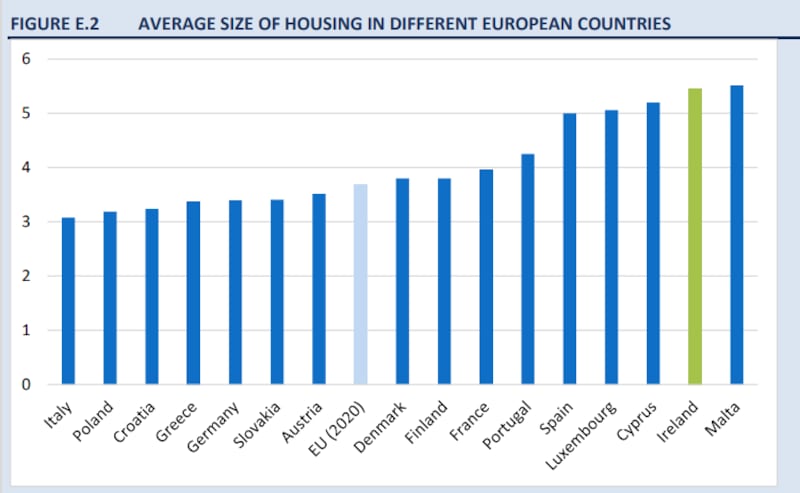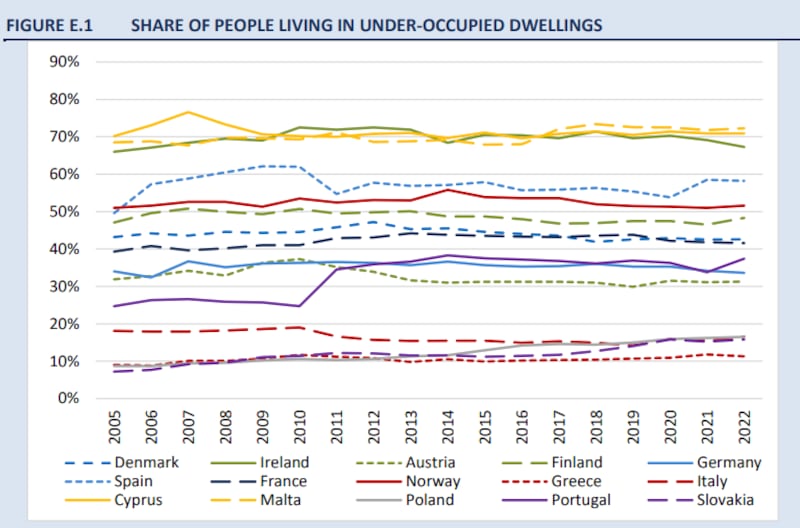More than two-thirds of people in the Republic live in homes that are too big for their needs, new research by the Economic and Social Research Institute (ESRI) has revealed.
Compared with other European countries, the study found that housing units in the State were “on average bigger with fewer people living in them”. In other words, the Republic’s homes have more bedrooms than the occupants require.
This inefficient use of housing was attributed to “specific cultural norms”, most notably the preference to live in houses over apartments. “This circumstance is very likely a product of the high share of houses and small share of apartments, especially in the cities,” noted the study.
The lack of downsizing options was also cited as a key challenge for people who wanted to trade down later in life.
RM Block


The ESRI’s analysis, contained in the think tank’s latest quarterly economic bulletin, indicated that 67.3 per cent of people here were living in under-occupied housing units. This was the third highest rate in Europe behind Malta and Cyprus and double the European Union average of 33.6 per cent.

A household is under-occupied if it has more than a minimum number of rooms considered adequate, according to EU statistical agency Eurostat.
The ESRI’s study linked the “elevated level of under-occupation” here to the typical size of accommodation units, with 73 per cent of dwellings containing more than two bedrooms. Consequently, the Republic had one of the highest rooms per person ratios in Europe, standing at 2.1 compared to an EU average of 1.6.
The ESRI’s research revealed that more than 88 per cent of people aged over 65 lived in under-occupied housing. This was also more prevalent among higher-income groups. Homeowners were also much more likely to live in an under-occupied housing unit than renters.
In 2022, almost 80 per cent of homeowners lived in an under-occupied unit compared to just 38 per cent of renters.

What is behind Bitcoin's remarkable recovery?
“Clearly, more high-rise developments would allow a greater number of people to use relatively smaller floor space more efficiently compared with a situation where everyone owns a house,” it said.
“Therefore, in dealing with the issue of low housing availability, policies which incentivise and facilitate the construction of relatively smaller housing units will be an important part of the policy response,” it said.
The ESRI’s findings come on the back of property website daft.ie’s latest report which indicated that the number of homes available to buy on its website as of March 1st was below 10,500, an all-time low for the company’s data series, which extends back to January 2007.
- Sign up for Business push alerts and have the best news, analysis and comment delivered directly to your phone
- Find The Irish Times on WhatsApp and stay up to date
- Our Inside Business podcast is published weekly – Find the latest episode here




















